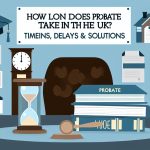Table of Contents

Key Takeaways
- Asset protection trusts in the UK are designed to safeguard your wealth from creditors, legal claims, and potential tax liabilities.
- Setting up a trust involves selecting trustworthy trustees, drafting a legal agreement, and transferring assets into the trust.
- Trusts can protect a variety of assets including property, cash, and investments, but have restrictions on certain asset types.
- While trusts provide asset protection and inheritance security, they can be costly and complex to manage.
- Regular reviews and professional guidance are crucial for effective trust management and to adapt to changing financial needs.
Introduction to Asset Protection Trusts in the UK
Let’s face it, protecting your assets is crucial, especially in a world filled with uncertainties. Asset protection trusts in the UK are powerful tools designed to shield your wealth from unforeseen circumstances like creditors and legal claims. They’re like a financial safety net, ensuring that what you’ve worked hard to accumulate stays intact for you and your heirs.
But what exactly are these trusts? In simple terms, an asset protection trust is a legal arrangement where you transfer your assets to a trustee, who then manages them for the benefit of your chosen beneficiaries. This setup offers a layer of protection, as the assets are no longer legally yours, making them less vulnerable to external threats.
“The main aim of an asset protection trust is to safeguard assets from potential risks and liabilities.”
Understanding how these trusts work can be a game-changer in financial planning. It’s not just about stashing away wealth; it’s about strategically securing it for future generations while navigating the complex landscape of taxes and legalities.
Purpose and Protection Offered by Trusts
The primary purpose of an asset protection trust is straightforward: to protect your assets. But why would you need such protection? Here are a few reasons:
- Shielding from Creditors: If you ever face financial difficulties, having a trust can prevent creditors from seizing your assets.
- Legal Claims: Trusts can protect your wealth from being part of legal disputes or claims against you.
- Divorce Settlements: Assets in a trust may not be included in divorce settlements, safeguarding your financial interests.
- Tax Efficiency: Trusts can help manage and potentially reduce tax liabilities, preserving more wealth for your beneficiaries.
Most importantly, these trusts provide peace of mind. Knowing that your assets are secure allows you to focus on other aspects of your life without constantly worrying about financial threats.
Common Misunderstandings and Clarifications
Despite their benefits, asset protection trusts are often misunderstood. Some people think they are only for the ultra-wealthy, while others believe they offer a way to completely avoid taxes. Let’s clear up these misconceptions by exploring top reasons to establish a financial LPA.
Firstly, asset protection trusts are not exclusive to the rich. They are valuable tools for anyone looking to secure their financial future, regardless of the size of their estate. Secondly, while trusts can be tax-efficient, they are not a means to evade taxes. Legal compliance is essential, and trusts must be structured within the boundaries of the law.
Understanding these nuances is key. By dispelling myths, we can better appreciate the strategic role these trusts play in financial planning.
Setting Up a UK Asset Protection Trust
Now that we understand what asset protection trusts are, let’s explore how to set one up. The process might seem daunting, but with the right guidance, it becomes manageable. For example, understanding what to do when a family member opposes an LPA can be crucial in navigating potential challenges.
Steps for Establishing the Trust
Establishing an asset protection trust involves several key steps:
- Select Trustees: Choose individuals or entities you trust to manage your assets. They should be reliable and capable of making sound financial decisions.
- Draft the Trust Agreement: This legal document outlines the terms of the trust, including the assets involved, the beneficiaries, and the trustee’s responsibilities.
- Transfer Assets: Move your chosen assets into the trust. This step officially separates them from your personal estate, offering the desired protection.
- Register the Trust: In some cases, you may need to register the trust with the appropriate authorities, ensuring compliance with UK laws.
Each step is crucial, and attention to detail is vital to ensure the trust functions as intended.
Choosing the Right Trustees
Your choice of trustees can make or break the effectiveness of your trust. Therefore, it’s important to select individuals or entities who are not only trustworthy but also financially savvy. A trustee’s role is to manage the trust assets according to the terms set out in the trust agreement, ensuring that the beneficiaries’ interests are prioritized. For more information, you can explore asset protection trusts and their benefits.
“Communicating with beneficiaries and addressing inquiries about the trust is a key responsibility of trustees.”
Besides that, trustees are responsible for making investment decisions, maintaining records, and ensuring compliance with applicable laws. Given these responsibilities, choosing the right trustees is a decision that requires careful consideration.
Legal Requirements and Documentation
Setting up a trust is not just about transferring assets; it involves adhering to legal requirements and ensuring all documentation is in order. The trust agreement must clearly outline the trust’s terms and comply with UK law. Engaging a solicitor can help navigate these legal intricacies, ensuring that your trust is both effective and compliant.
Proper documentation is critical. It provides clarity on the trust’s operation and serves as a reference point for trustees and beneficiaries alike. As with any legal arrangement, meticulous attention to detail can prevent future disputes and ensure the trust operates smoothly.
Assets Covered by UK Asset Protection Trusts
One of the most appealing aspects of asset protection trusts is the variety of assets they can protect. Understanding what can and cannot be included is essential for maximizing the trust’s benefits.
Eligible Assets for Protection
Asset protection trusts can cover a wide range of assets, including business interests. To learn more about safeguarding your business, consider how a business LPA can enhance your enterprise.
- Property: Residential or commercial properties can be included, providing a safeguard against potential claims.
- Cash and Bank Accounts: Liquid assets are easily transferred to a trust, offering immediate protection.
- Investments: Stocks, bonds, and mutual funds can be placed in a trust, securing them from market volatility and legal threats.
- High-Value Assets: Art, jewellery, and other valuables can also be protected, ensuring they remain in the family.
However, it’s important to note that certain assets may have restrictions. For example, pensions and life insurance policies may require special consideration or may not be eligible for inclusion. Consulting with a financial advisor can help determine the best assets to include in your trust.
By understanding the types of assets that can be protected, you can strategically plan which parts of your wealth to secure, ensuring a comprehensive approach to asset protection.
Inclusion of Property, Investments, and More
Asset protection trusts are versatile in the types of assets they can encompass. Property, whether residential or commercial, is a common inclusion. By placing property into a trust, you protect it from potential claims or creditors. This means your family home or rental properties can remain secure, even if financial difficulties arise.
Besides real estate, investments are another significant category that can be included. Stocks, bonds, and mutual funds, when placed in a trust, are shielded from market fluctuations and legal threats. This ensures that your investment portfolio remains intact and continues to grow for future beneficiaries.
Moreover, high-value assets such as art collections, valuable antiques, or jewellery can also be safeguarded within a trust. This means cherished family heirlooms can be preserved for generations, protected from external claims.
| Asset Type | Covered by Asset Protection Trust |
|---|---|
| Primary Residence | Yes |
| Secondary Properties | Yes |
| Cash Savings | Yes |
| Investments (stocks, bonds, etc.) | Yes |
| Business Interests | Yes |
| Valuable Personal Property (jewelry, art, etc.) | Yes |
| Pension Funds | Generally No* |
| Life Insurance Policies | Yes** |
| Vehicles | Yes |
| Intellectual Property | Yes |
Restrictions on Asset Types
While asset protection trusts are flexible, they do have limitations. Certain asset types may face restrictions or require additional considerations:
- Pensions: Typically, pensions are not directly included in trusts due to specific legal regulations.
- Life Insurance Policies: These may require special arrangements or might not be eligible for trust inclusion.
- Foreign Assets: Assets located outside the UK might face jurisdictional challenges when placed in a UK trust.
These restrictions mean that not all assets can be seamlessly transferred into a trust. Consulting with a financial advisor can help navigate these complexities, ensuring that your trust is structured effectively and legally.
Understanding these limitations is crucial. It allows you to make informed decisions about which assets to protect, ensuring your trust serves its intended purpose without legal complications.
Benefits of Using Asset Protection Trusts
The advantages of asset protection trusts extend beyond mere asset security. They offer a strategic approach to managing wealth, providing benefits that can significantly impact your financial planning.
Shielding Assets from Creditors and Legal Claims
One of the most compelling benefits of asset protection trusts is their ability to shield assets from creditors and legal claims. By transferring ownership to a trust, the assets are no longer considered part of your personal estate. This means they are protected from creditors in the event of financial difficulties, ensuring your wealth remains intact.
Ensuring Inheritance for Heirs
Asset protection trusts are a powerful tool for ensuring your heirs receive their intended inheritance. By clearly outlining beneficiaries in the trust agreement, you can dictate how and when assets are distributed. This control ensures that your wealth is passed down according to your wishes, without the risk of disputes or mismanagement.
Furthermore, trusts can protect inheritances from potential claims during divorce settlements or other legal proceedings. This means your children or grandchildren can receive their inheritance without the risk of it being diminished by external factors.
Effect on Taxation and Financial Planning
Asset protection trusts can also play a role in managing tax liabilities. While they are not a tool for tax evasion, they can offer tax efficiencies that preserve more of your wealth for your beneficiaries. Trusts can help mitigate inheritance tax, providing a strategic advantage in estate planning.
Besides tax considerations, trusts offer a structured approach to financial planning. They provide clarity on asset distribution, ensuring your financial legacy is managed according to your vision. This foresight can prevent future disputes and ensure your wealth is utilized effectively.
Potential Drawbacks and Considerations
While asset protection trusts offer numerous benefits, they are not without potential drawbacks. Understanding these considerations is crucial for making an informed decision about whether a trust is right for you. For those interested in secure financial planning, exploring financial LPAs might also be beneficial.
Irreversibility and Long-term Implications
One significant consideration is the potential irreversibility of asset protection trusts. Once assets are transferred to a trust, regaining personal control can be challenging. This permanence means you must be confident in your decision and the terms outlined in the trust agreement.
- Loss of Control: Once assets are in a trust, you may lose direct control over them, relying on trustees to manage them according to the trust’s terms.
- Future Changes: Adapting the trust to future financial needs or changes in circumstances can be difficult and may require legal intervention.
These long-term implications mean that careful planning is essential. Consulting with legal and financial advisors can help ensure your trust aligns with your long-term goals and remains flexible enough to adapt to changing circumstances. For those considering other protective measures, exploring options like a financial LPA might also be beneficial.
Understanding these potential drawbacks is key to making a well-informed decision. While trusts offer significant benefits, they require careful consideration and planning to ensure they serve your best interests.
Costs and Fees Involved
Establishing and maintaining an asset protection trust involves costs that must be considered. Initial setup fees can vary, depending on the complexity of the trust and the legal expertise required. Besides these initial costs, ongoing management fees for trustees and legal compliance can add up over time.
It’s essential to weigh these costs against the benefits the trust provides. For many, the peace of mind and asset security offered by a trust outweigh the financial investment. However, understanding these expenses is crucial for effective financial planning.
By budgeting for these costs, you can ensure your trust remains sustainable and continues to serve its intended purpose without financial strain.
Conflicts with Future Financial Needs
Asset protection trusts can also conflict with future financial needs. Once assets are in a trust, accessing them for personal use can be challenging. This limitation means that unforeseen financial needs may require alternative planning strategies.
Therefore, it’s important to consider your long-term financial needs when establishing a trust. Ensuring that the trust aligns with your future goals and remains adaptable can prevent potential conflicts and ensure your financial security.
By understanding these potential challenges, you can make informed decisions about whether an asset protection trust is right for you. With careful planning and expert guidance, you can create a trust that effectively secures your assets while remaining flexible enough to meet your evolving financial needs.
Tips for Successful Trust Management
Managing an asset protection trust effectively requires ongoing attention and strategic planning. By implementing a few key practices, you can ensure your trust remains effective and aligned with your financial goals.
Regular Reviews and Updates
Just like any financial plan, trusts require regular reviews to ensure they remain relevant and effective. Life changes, such as marriage, divorce, or the birth of a child, can impact your financial goals and necessitate updates to your trust. Regularly reviewing your trust agreement allows you to make necessary adjustments and ensure it continues to meet your needs.
Besides personal changes, external factors such as changes in tax laws or economic conditions can also affect your trust. Staying informed and proactive about these changes ensures your trust remains compliant and advantageous.
Effective Communication with Beneficiaries
Clear communication with beneficiaries is crucial for successful trust management. By keeping beneficiaries informed about the trust’s purpose and operation, you can prevent misunderstandings and potential disputes. Transparency builds trust and ensures that all parties understand their roles and expectations. For more insights on maintaining transparency, consider reading about court of protection and its importance in trust management.
Regular communication also allows beneficiaries to voice any concerns or questions they may have, fostering a collaborative and supportive environment. This proactive approach can prevent future conflicts and ensure the trust operates smoothly.
Professional Guidance and Financial Advice
Engaging professional guidance is invaluable when managing a trust. Legal and financial advisors can provide expertise and insights that ensure your trust remains effective and compliant with all legal requirements. Their guidance can help you navigate complex decisions and adapt your trust to changing circumstances. For instance, understanding the top reasons to establish a financial LPA can be crucial in managing your assets effectively.
Besides legal advice, financial advisors can offer strategic planning insights, helping you maximize the benefits of your trust. By leveraging their expertise, you can make informed decisions that align with your long-term financial goals.
Frequently Asked Questions (FAQ)
How Do Asset Protection Trusts Differ from Other Trusts?
Asset protection trusts are specifically designed to shield assets from creditors and legal claims. Unlike other trusts, their primary focus is on protecting wealth rather than solely distributing it to beneficiaries. This unique purpose sets them apart and requires specific legal structures and terms.
What Are the Risks of Setting Up a Trust?
While trusts offer significant benefits, they also come with risks. The potential loss of control over assets and the costs involved in setting up and maintaining a trust are key considerations. Additionally, trusts are subject to legal requirements, and non-compliance can lead to legal challenges or financial penalties.
Can I Change the Terms of an Asset Protection Trust?
Changing the terms of an asset protection trust can be challenging, especially if the trust is irrevocable. However, certain trusts allow for flexibility through mechanisms like powers of appointment. Consulting with a legal advisor can help you understand the options available and the implications of making changes.
How Does a Trust Affect My Will?
Asset protection trusts can complement your will by clearly outlining the distribution of certain assets. While your will governs the distribution of your estate upon death, a trust can manage specific assets during your lifetime and beyond. This dual approach can provide comprehensive estate planning and ensure your wishes are honoured.






